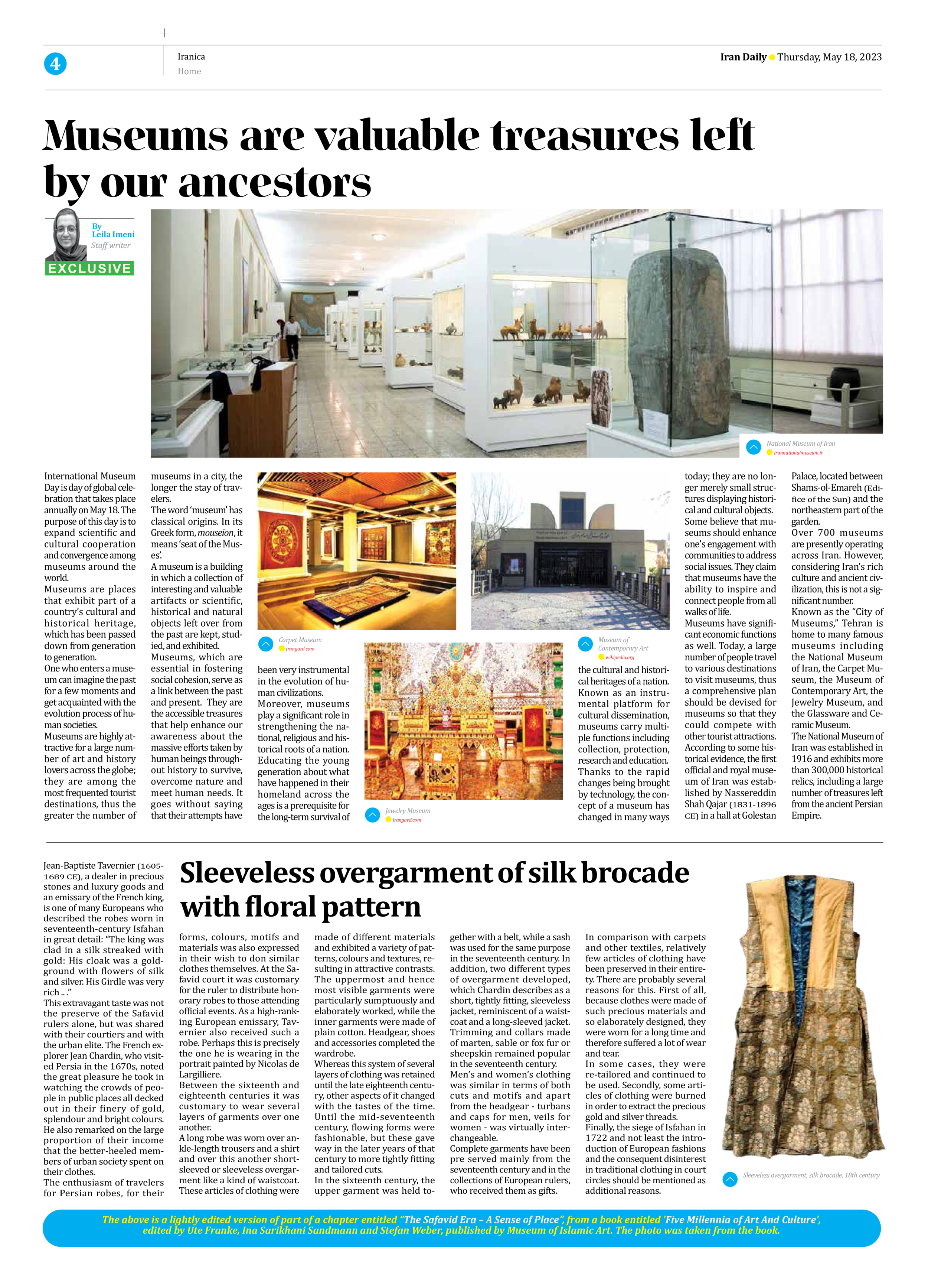
Sleeveless overgarment of silk brocade with floral pattern
Jean-Baptiste Tavernier (1605-1689 CE), a dealer in precious stones and luxury goods and an emissary of the French king, is one of many Europeans who described the robes worn in seventeenth-century Isfahan in great detail: “The king was clad in a silk streaked with gold: His cloak was a gold-ground with flowers of silk and silver. His Girdle was very rich .. .”
This extravagant taste was not the preserve of the Safavid rulers alone, but was shared with their courtiers and with the urban elite. The French explorer Jean Chardin, who visited Persia in the 1670s, noted the great pleasure he took in watching the crowds of people in public places all decked out in their finery of gold, splendour and bright colours. He also remarked on the large proportion of their income that the better-heeled members of urban society spent on their clothes.
The enthusiasm of travelers for Persian robes, for their forms, colours, motifs and materials was also expressed in their wish to don similar clothes themselves. At the Safavid court it was customary for the ruler to distribute honorary robes to those attending official events. As a high-ranking European emissary, Tavernier also received such a robe. Perhaps this is precisely the one he is wearing in the portrait painted by Nicolas de Largilliere.
Between the sixteenth and eighteenth centuries it was customary to wear several layers of garments over one another.
A long robe was worn over ankle-length trousers and a shirt and over this another short-sleeved or sleeveless overgarment like a kind of waistcoat. These articles of clothing were made of different materials and exhibited a variety of patterns, colours and textures, resulting in attractive contrasts. The uppermost and hence most visible garments were particularly sumptuously and elaborately worked, while the inner garments were made of plain cotton. Headgear, shoes and accessories completed the wardrobe.
Whereas this system of several layers of clothing was retained until the late eighteenth century, other aspects of it changed with the tastes of the time. Until the mid-seventeenth century, flowing forms were fashionable, but these gave way in the later years of that century to more tightly fitting and tailored cuts.
In the sixteenth century, the upper garment was held together with a belt, while a sash was used for the same purpose in the seventeenth century. In addition, two different types of overgarment developed, which Chardin describes as a short, tightly fitting, sleeveless jacket, reminiscent of a waistcoat and a long-sleeved jacket. Trimming and collars made of marten, sable or fox fur or sheepskin remained popular in the seventeenth century.
Men’s and women’s clothing was similar in terms of both cuts and motifs and apart from the headgear - turbans and caps for men, veils for women - was virtually interchangeable.
Complete garments have been pre served mainly from the seventeenth century and in the collections of European rulers, who received them as gifts.
In comparison with carpets and other textiles, relatively few articles of clothing have been preserved in their entirety. There are probably several reasons for this. First of all, because clothes were made of such precious materials and so elaborately designed, they were worn for a long time and therefore suffered a lot of wear and tear.
In some cases, they were re-tailored and continued to be used. Secondly, some articles of clothing were burned in order to extract the precious gold and silver threads.
Finally, the siege of Isfahan in 1722 and not least the introduction of European fashions and the consequent disinterest in traditional clothing in court circles should be mentioned as additional reasons.
The above is a lightly edited version of part of a chapter entitled “The Safavid Era – A Sense of Place”, from a book entitled 'Five Millennia of Art And Culture',
edited by Ute Franke, Ina Sarikhani Sandmann and Stefan Weber, published by Museum of Islamic Art. The photo was taken from the book.







